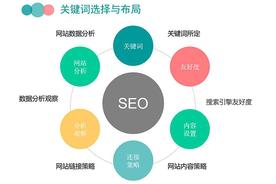In the dynamic landscape of Digital Marketing, website optimization plays a crucial role in ensuring visibility, User engagement, and ultimately, conversions. One often overlooked aspect is the frequency of content updates. This facet is not only essential for maintaining a fresh and relevant online presence but also for improving search engine rankings and user experience.
Search engines favor websites that consistently offer valuable and updated content to users. Google's algorithms, for instance, are designed to crawl and index web pages that provide the most current information. By regularly updating your content, you signal to these algorithms that your site remains active and relevant, thereby increasing the likelihood of higher rankings in search results.

Moreover, frequent content updates can improve your website's overall quality by addressing changing trends, user queries, and industry news. This responsiveness to current events and topics keeps your website pertinent, which encourages users to visit more frequently and stay longer. A site with up-to-date content is more likely to engage visitors, leading to increased user satisfaction and potentially lower bounce rates.
The frequency of content updates also affects user perception. Sites that appear stagnant or outdated may be viewed as unreliable or unprofessional. Conversely, a website that showcases new material regularly conveys a sense of vitality and authority within its niche. This perception can lead to increased brand loyalty and advocacy, as users are more likely to recommend an active and informative website to others.
However, it's important to strike a balance with content updates. Quality should never be sacrificed for the sake of frequency. Poorly written or irrelevant content can harm your website's reputation and SEO efforts. Additionally, excessive updates can strain server resources and may require more frequent reindexing by search engines, which could lead to temporary ranking fluctuations.
To maximize the benefits of content updates, employ a strategic approach. Plan a content calendar that aligns with your business objectives, user needs, and industry trends. Use various formats such as blog posts, infographics, videos, and podcasts to keep the content diverse and engaging. Also, consider the relevance of older content and whether it needs updating to maintain accuracy and relevancy.
In conclusion, the frequency of website content updates significantly influences website optimization. Regularly refreshing content can enhance search engine visibility, improve user engagement, and foster a positive brand image. However, this process must be balanced with maintaining content quality and avoiding excessive updates that could negatively impact website performance. By carefully planning and executing content update strategies, website owners can ensure their online presence remains strong and effective in the ever-evolving digital space.
评论列表 (0条)